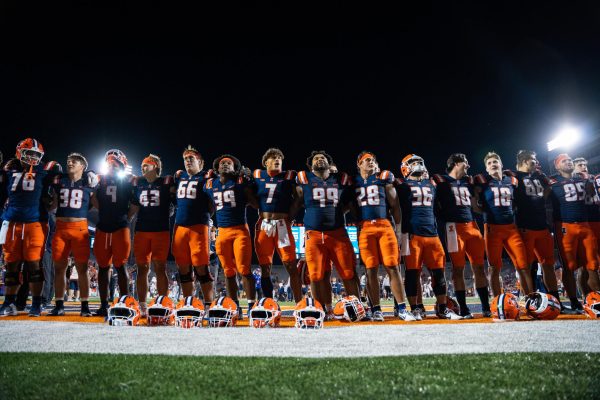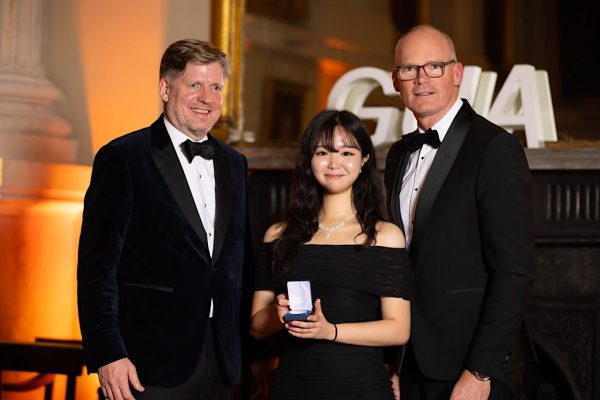ASCE T&DI emphasizes the importance of creating better roads
Nov 30, 2017
As we walk and drive on roads everyday, we may not give their structure and composition a second thought. In fact, we may even take them for granted. But behind the scenes, transportation engineers put much work and effort into building sturdy, safe roads for citizens.
Members of the American Society of Civil Engineers Transportation and Development Institute Graduate Student Organization at the University are people who value improving road systems. This semester, they are focusing on designing optimal asphalt mixtures through workshops that the organization held in November.
The ASCE T&DI aims to strengthen the development of transportation engineering, a goal that the organization has been working towards for many years. Through seminars and raising awareness, the GSO aims for professional growth, as well as intra-university and community outreach.
Transportation engineering is made up of planning, designing, analyzing, operating and managing transportation systems. This includes not only groundwork but also air, rail and water, covering the full range of methods of transit.
Previous activities arranged by the organization consist of holding workshops with outside speakers, putting together educational trips, and volunteering in “transportation-related conferences on campus,” according to their website.
Get The Daily Illini in your inbox!
The recent workshops that the GSO held addressed the means of creating ideal asphalt mixtures. ASCE T&DI was able to bring in expert William J. Pine, who has ties to Robert D. Bailey, who originally developed the Bailey Method in the 1980s.
Bailey, who was part of the Illinois Department of Transportation in the early 80s, constructed a tool that develops and analyzes asphalt mixtures in the field and laboratory called the Bailey Method. It provides the basic structure for asphalt mixture designs and is being used by practitioners around the United States today.
Punit Singhvi, a second-year graduate student in Engineering and treasurer of ASCE T&DI, noted that because road infrastructures are worth millions of dollars, whatever is put on the roads needs to be the highest quality possible.
He added that he hoped members of the organization were able to gain a greater understanding of the asphalt mixtures and how they are arranged.
“By knowing the calculated ways of each of the ingredients,” Singhvi stated, “You can make the best mixture possible.”
The workshops aim to provide the fundamental principles for students, as many will eventually go into this industry.
President of ASCE T&DI Mohammed Sawalha, a PhD student in Engineering, shares that the organization has had a great deal of success this semester. They have volunteered in the Illini Fighting Hunger Meal Packaging Program, the CEE job fair, and have fundraised to help Puerto Rico and Mexico. Although transportation engineering is important, they also place value in volunteer work.
The organization has much more planned for the year. “Our field trip has already been planned for next spring to ‘Mcity Testing Facility,'” Sawalha stated, “This facility is for autonomous vehicle testing and is at the University of Michigan Ann Arbor.”
In addition to the workshops and seminars that have already taken place, Sawalha says that they are continuously looking for experts to come in and teach the graduate students more about transportation engineering. “We are expecting six more professionals to come between now and the end of May 2018,” Sawalha said.
The next workshop, “Leadership and Academia Skills,” will be held at the start of the spring semester.
Every year in March, ASCE T&DI participates in Engineering Open House to advocate the organization’s motives and goals. For the most recent event in 2017, they collaborated with the Illinois Center for Transportation and were one of the winners of the event.
Members of the GSO intend to make this event an opportunity to make people more aware about roads. Although all crowds are important — families, parents, high school students — the organization aims to educate interested children who are potential future professionals.
The graduate students put together activities that are specially designed for kids, which are both engaging and informative. For example, they use graham crackers and cereal as an analogy of how layers play an important role in establishing high-quality roads. By having the children prepare their own “recipes” for their graham cracker roads, the graduate students are emphasizing that there are steps in making the perfect recipe for asphalt mixtures as well.
Road engineering is essential in that it helps connect people through dynamic systems, and Singhvi emphasized that a good roadway infrastructure can lead to the significant development of the country.
“This is where my motivation came from,” he laughed. Singhvi shared that he had always admired the power of planning and designing something that would play a significant role in society. “In the past, I worked on projects where I designed bridges. I saw a bridge designed by me be put into use and knew I wanted to do this,” he said.






